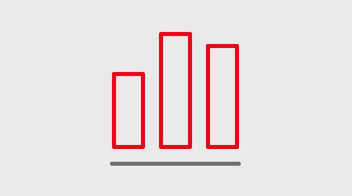Net financial debt
Net financial debt as of Dec 31 / € million | 2023 | 2022 | Change | |
absolute | % | |||
Senior bonds | 30,042 | 28,802 | +1,240 | +4.3 |
Leasing liabilities | 4,787 | 5,180 | –393 | –7.6 |
Commercial paper | 358 | – | +358 | – |
Interest-free loans | 152 | 298 | –146 | –49.0 |
Other financial debt | 2,769 | 993 | +1,776 | – |
Financial debt | 38,108 | 35,273 | +2,835 | +8.0 |
Cash and cash equivalents, highly liquid cash investments and financial receivables | –3,934 | –6,323 | +2,389 | –37.8 |
Effects from currency hedges | –221 | –123 | –98 | +79.7 |
Net financial debt | 33,953 | 28,827 | +5,126 | +17.8 |
Net financial debt rose significantly as of December 31, 2023. A particularly negative effect was the continued high demand for funds for capital expenditures, weak profitability, the prefinancing of additional infrastructure measures and the payment of dividends to the Federal Government. This was offset, in part, by the cash inflow from a capital measure by the Federal Government (Climate Action Program).
The increase in financial debt was increased by the reduction of cash and cash equivalents (including cash investments close to liquidity).
- The financial debt increased significantly:
- The euro value of the outstanding senior bonds was somewhat higher due to issuing. Exchange rate effects did not play a key role here as a result of closed hedging transactions.
- Leasing liabilities decreased compared to the end of the previous year, driven by the reclassification of DB Arriva and repayments. The conclusion of new leasing contracts and the extension of existing leasing contracts had a partially offsetting effect.
- Commercial paper liabilities increased significantly due to issues.
- Interest-free loans decreased further as a result of repayments.
- Other financial debt increased significantly, mainly as a result of the bridge financing.
- The foreign currency senior bonds are almost entirely hedged by corresponding derivatives against exchange rate fluctuations, so that exchange rate effects are mainly compensated through the offsetting position of the
hedging transaction.
The maturity structure of financial debt has shifted towards maturity of 2–3 years, due in part to bridge financing. In contrast, the proportion of long-term maturities in particular declined.
The composition of financial debt has shifted somewhat towards bank debt due to bridge financing. The share of commercial paper also increased due to emissions. The share of senior bonds and leasing liabilities was down.


